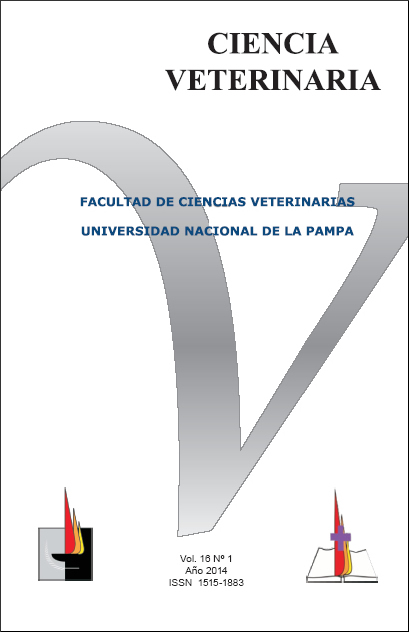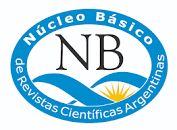Determination of amino acid motifs present in the antigen-binding site of BoLA-DRB3 alleles in a Holstein population of La Pampa y su asociación con mastitis
DOI:
https://doi.org/10.19137/cienvet20141611Keywords:
amino acid motifs, mastitis, immune response, BoLA-DRB3, HolsteinAbstract
The intensity of the immune responseis regulated by amino acid motifs in antigen recognition
sites (ARS) present in the pockets of
Major Histocompatibility Complex molecules.
The objective of this work was to study the association
between these motifs and resistance/
susceptibility to mastitis measured by somatic
cell counts (SCC) in milk from Holstein cattle
from the province of La Pampa. The population
was divided into: 1) case group with high SCC
and presence of mastitis (≥ 250,000 cells/ml
susceptibility) and 2) control group under SCC
(< 250,000 cells/ml resistant). From a sample of
128 animals, 40 were genotyped for the second
exon of BoLA-BRB3 gene by direct sequencing
technique, 20 cows for each group. A total of 24
alleles were detected in the analyzed population.
Gene frequencies of amino acid motifs of
the five pockets (1, 4, 6, 7 and 9) from ARS in
the two groups of animals were calculated. Test
Odds Ratio (OR) Woolf-Haldane was used to
study the association. No significant differences
between amino acid motifs of pockets 1, 4, 7
and 9 between groups with high and low SCC
were found. However, the T 11 Y 30 motif in
pocket 6 (found in BoLA-DRB3 * 0601, * 0901
and * 4401 alleles) showed a significant OR
value = 0.11 (p = 0.03). This suggests an association
between this motif with a lower risk of
developing mastitis. The role of amino acid motif
T 11Y 30 in animal immune response should be
validated in independent populations
Downloads
Downloads
Published
How to Cite
Issue
Section
License
Al momento de enviar sus contribuciones, los colaboradores deberán declarar , de manera fehaciente, que poseen el permiso del archivo o repositorio donde se obtuvieron los documentos que se anexan al trabajo, cualquiera sea su formato (manuscritos inéditos, imágenes, archivos audiovisuales, etc.), permiso que los autoriza a publicarlos y reproducirlos, liberando a la revista y sus editores de toda responsabilidad o reclamo de terceros , los autores deben adherir a la licencia Creative Commons denominada “Atribución - No Comercial CC BY-NC-SA”, mediante la cual el autor permite copiar, reproducir, distribuir, comunicar públicamente la obra y generar obras derivadas, siempre y cuando se cite y reconozca al autor original. No se permite, sin embargo, utilizar la obra con fines comerciales.







4.png)


7.png)



